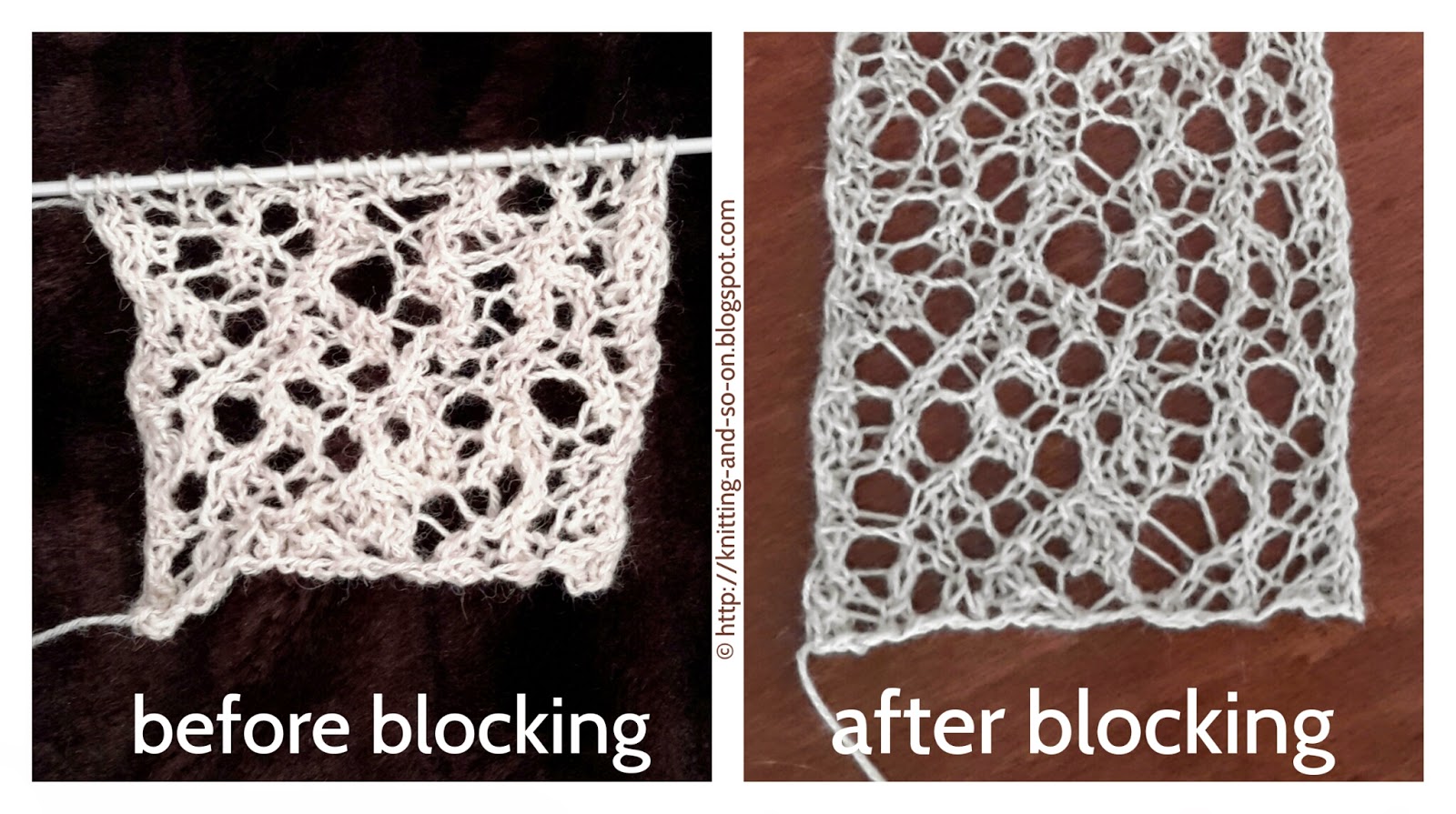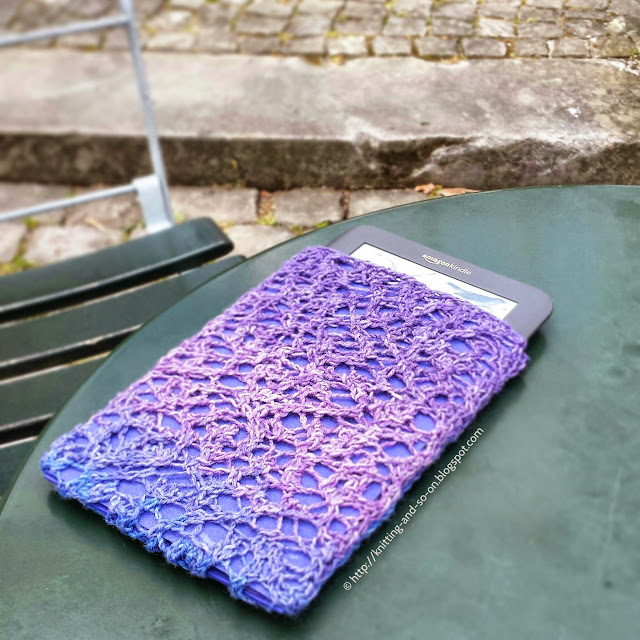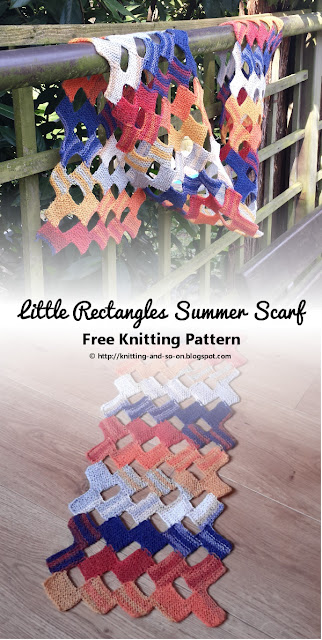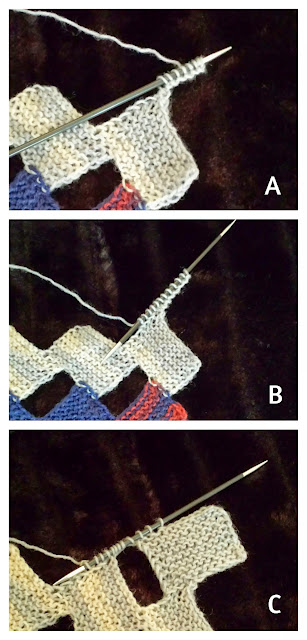 This e-book sleeve is easy to make and looks quite special. You can use some leftover yarn and contrast or complement it with a colored foam sheet.
This e-book sleeve is easy to make and looks quite special. You can use some leftover yarn and contrast or complement it with a colored foam sheet.The lace part is knitted at random. This means that there are no detailed knitting instructions as in a real lace patterns, but only a description how to arrive at something similar. The effect is created by randomly knitting lace stitches (yarn-over, "knit2together etc.) that make up a nice organic looking structure.


This work by Knitting and so on is licensed under a Creative Commons Attribution-NonCommercial-ShareAlike 4.0 International License.
Materials:
- yarn (I used fingering weight yarn)
- knitting needles the yarn calls for (I used 3mm needles)
- a foam sheet
- a pair of scissors
- a tapestry needle
- glue (I used basic universal glue)
- a ruler and a pencil
- the measurements of your e-book/tablet
Instructions:
- Measure your ebook - and knit a piece of random lace that is 5mm wider than your ebook and 5mm longer then twice its height. Block it to size. See instructions on how to knit random lace below.
- Using pencil and ruler, mark and cut out two pieces of foam sheet that are as big as your ebook reader or tablet - something like 1mm per side.
- Glue the foam sheet pieces to the WS of your knitting, in a way that the edge stitches ofr your knitting still stand out a bit on each side. Apply the glue sparingly on your knitting only in places where there are no holes (see picture below). That way you will minimize the visible glue residue on the ebook sleeve.
Press the foam sheet to the knitting for a few seconds and then let it dry completely.
- After the glue has dried completely, fold the halves together right sides out and sew the sides together (I used the tails of my knitting) - using the "invisible stitch" (as shown from minute 3:30 to 5:15 in this YouTube video).
How to Knit Random Lace
It's best to use a yarn that blocks well, e.g. something that has a large percentage of wool. I used standard sock yarn and 3mm needles.
Loosely cast on the amount of stitches you think you need. For my 12.2cm wide piece I cast on 25 stitches. If in doubt, it's better to knit one stitch less - this allows you to stretch the piece while blocking it and thus bringing out the lace in a better way.
I decided to do only "knit stitches" on one side (RS) and only "purl stitches" on the other (WS). Starting with WS I knitted lace stitches in a completely random manner.
- On WS I randomly did p2tog's, yo's, p2togtbl's, double-yo's and p3tog's.
- On RS I randomly did k2tog's, ssk's yo's and double-yo's.
If you want a neater pattern, do one increase and corresponding decrease next to each other. For a more organic look, do a few increases and only then the necessary decreases. I would advise, however, not to do this too much, since then your piece will be askew.
After a while, I only counted the increases and decreases (or stitches below and above par).
Knit until your piece is a bit less than about twice as long as your ebook is high - keep in mind that it will grow on the blocking board, both with width and length. Therefore, it's better to knit it slightly smaller and stretch it on the blocking board.
Don't worry if your piece looks crumpled before blocking. Chances are that it will look nice and lacy afterwards (see picture above).
I didn't weave in the ends but left tails on both sides that were long enough to sew the sides together.
This project was featured on the Pinbellish Link Party #35 at purfylle.com. Thank you!


























